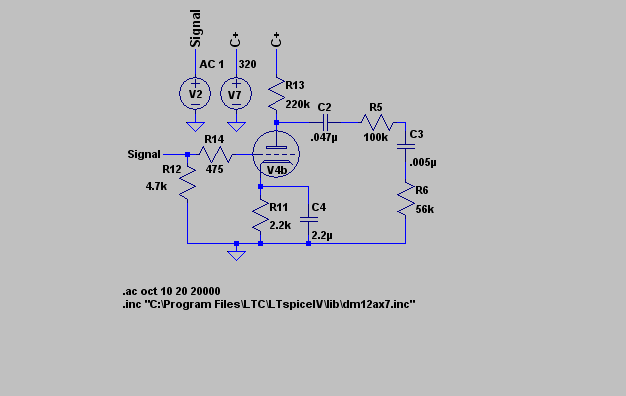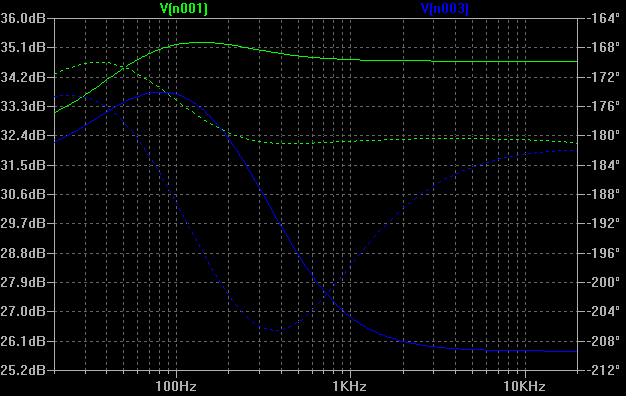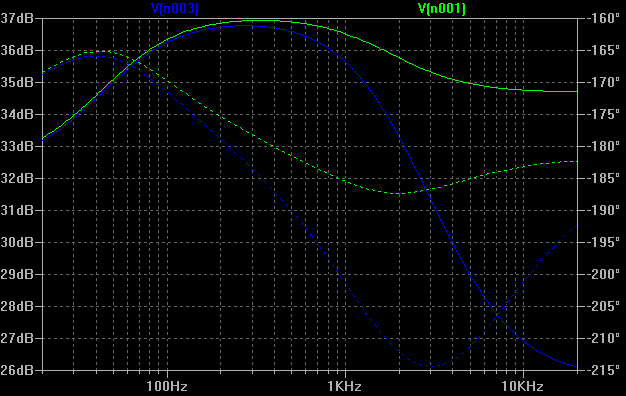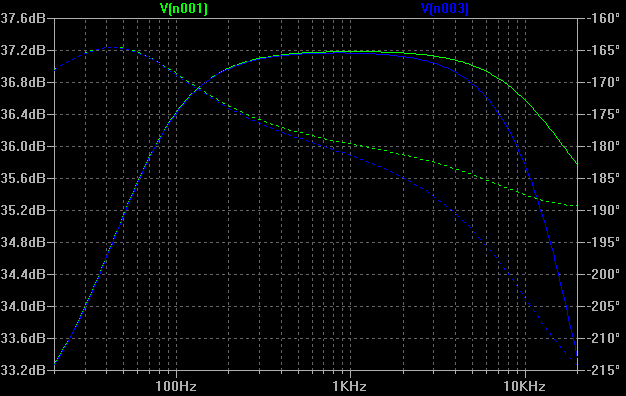To be fair, I haven't done any actual physical digging into the my amp as I've needed it operational for rehearsals and shows. So figuring out how to model bits of the Nomad circuit in SPICE, or any tube circuit for that matter, has been a Godsend when it comes to learning how these mysterious glass bottles interact with the rest of the amp and make the magic sounds they do. When one considers that hitting a PC board with a soldering iron too much can kill the board, I'm especially glad I can simulate in SPICE what will happen before taking the risks of open heart surgery with the Nomad.
So, we have shown that the FX loop recovery stage is attenuating all frequencies past 100hz Well, why? And what to do about it? Let's take another look at the schematic for that stage. and it's frequency response
The green line shows the frequency response of the stage as it exits the valve, but before it has crossed the output coupling cap. The blue line is it taken at the knee of that voltage divider/low pass filter, formed by the 100k resistor, 56k resistor and .005µF capacitor. That capacitor is bleeding off high frequencies to ground, and due to it's size is actually bleeding off quite a lot. What were to happen if we were to make it smaller by an an order of magnitude, from .005µF/5nF to 500pF?
That's a bit better. We've got our mids back now at least, but we're still loosing some of our top end. Let's see what happens if we shrink the cap again by another order of magnitude, from 500pF to 50pF.
That's
much better. Frequency response is nice and flat for most of the range of interest. Sure, the highs and lows are being rolled off a bit, but the lowest part of the lows were getting rolled off anyway, and at least now, freqeuncy response on the high end isn't down until past 10kHz. The rolling off of high frequencies
should still prevent any instability or oscillations, especially if the phase inverter caps are still in place, unless there's a problem elsewhere in the amp.
So, here is what I propose for a De-Mud Mod - Mk II(C+?

) change the .005µF cap on the output of the FX loop recovery stage to a 50pF cap. the nearest 5% standard value, 51pF or 10% standard value, 47pF should work fine too. This should stop the attenuation of all the midrange and high range through the FX loop while still bleeding off enough high range frequencies to prevent instability.
Nomad100hd, since you have an interest in tweaking the Ch3 tone stack, I'll run some simulations of that next.

























